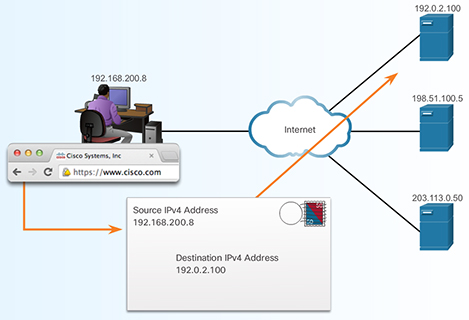2.2.5 IP addressing
Packets that cross the internet must be internet protocol (IP) packets. Each IP packet must contain a valid source and destination IP address. Without valid address information, packets will not reach the destination host and return packets will not make it back to the original source. The IP protocol defines the structure of the source and destination IP addresses. It specifies how these addresses are used in routing of packets from one host or network to another.
Currently, the internet uses IPv4 (IP version 4), but is transitioning to IPv6 (IP version 6). IPv6 allows for greater access and scalability with more available IP addresses and other features.
The IP address is similar to the mailing address of a person. It is known as a logical address because it is logically assigned based on the host location. This process is similar to the local government assigning a street address based on the logical description of the city, village, or neighborhood. It would be impossible to remember all of the IP addresses for all of the servers hosting services on the internet. Instead, there is an easier way to locate servers by associating a name with an IP address. In the figure, servers on the internet translate the name www.cisco.com [Tip: hold Ctrl and click a link to open it in a new tab. (Hide tip)] to the IP address for the destination.

